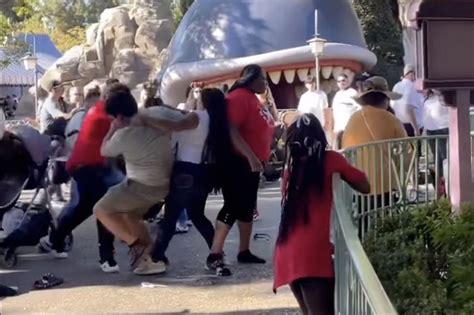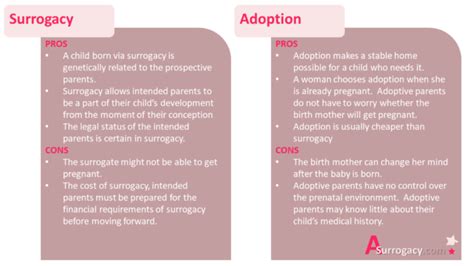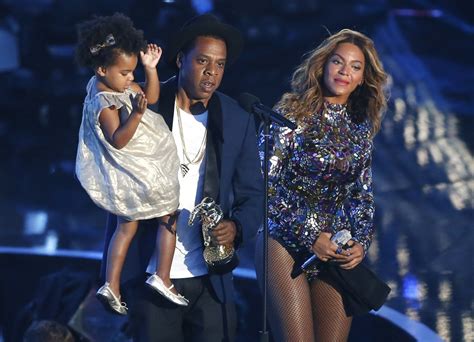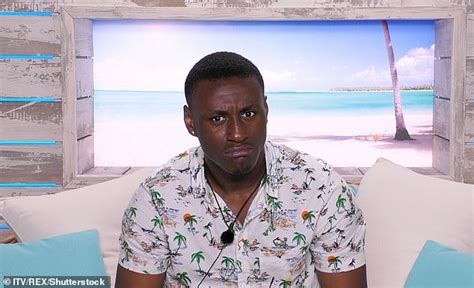
A physical altercation erupted at Disneyland, marking yet another instance of disruptive behavior at the iconic theme park. Video footage circulating online captured the brawl, reigniting concerns about security and guest conduct within the “Happiest Place on Earth.”
Another day, another brawl at Disneyland. A video circulating online shows another physical altercation at Disneyland Park in Anaheim, California, raising questions about the increasing frequency of such incidents and the measures in place to prevent them. While details surrounding the cause of the fight remain unclear, the footage depicts individuals exchanging blows, adding to a growing list of disruptive events at the beloved theme park.
The incident, the latest in a string of reported disturbances, has once again brought the issue of guest behavior at Disney parks into sharp focus. The video, widely shared across social media platforms, shows multiple people involved in the physical confrontation. The exact location within the park remains unspecified in initial reports.
“While the details surrounding the cause of the fight remain unclear,” the incident follows previous high-profile altercations at both Disneyland and Walt Disney World, leading to renewed scrutiny of security protocols and guest management strategies. The theme park is known for attracting millions of visitors annually, and managing such large crowds while maintaining a safe and enjoyable environment presents ongoing challenges.
Disneyland officials have yet to release an official statement regarding the most recent incident. However, past incidents have resulted in arrests, bans from the park, and increased security measures. The company’s policies explicitly prohibit disruptive behavior, and those found violating these rules face consequences. This recent event underscores the need for continued vigilance and potential reevaluation of current safety measures to ensure the safety and enjoyment of all guests.
The online reactions to the video have been varied, ranging from shock and disappointment to calls for stricter enforcement of park rules. Many social media users expressed concern over the potential impact of such incidents on the overall Disneyland experience. Some users have also questioned the effectiveness of existing security measures in preventing these types of altercations.
This latest incident also raises broader questions about the underlying factors contributing to disruptive behavior in public spaces. Some observers have pointed to increased stress levels, heightened political polarization, and a decline in social norms as potential contributing factors. Others have emphasized the role of alcohol consumption and inadequate supervision of minors.
The prevalence of camera phones and social media has also contributed to the increased visibility of these incidents. Videos of altercations, once confined to eyewitness accounts, now spread rapidly across the internet, amplifying public awareness and scrutiny. This increased exposure can also lead to copycat behavior and a normalization of disruptive conduct.
As Disneyland continues to grapple with the challenge of maintaining a safe and enjoyable environment for all guests, the recent brawl serves as a stark reminder of the need for ongoing vigilance, proactive security measures, and a commitment to enforcing park rules. The company’s response to this incident, and others like it, will be closely watched by park visitors, employees, and the broader public.
The incident underscores the complexities of managing large crowds in high-stress environments. Theme parks, with their long lines, crowded spaces, and high expectations, can often be breeding grounds for frustration and tension. Effective crowd management, de-escalation techniques, and clear communication are essential to preventing minor disagreements from escalating into physical altercations.
Furthermore, the role of park employees in maintaining order and ensuring guest safety is crucial. Training programs that equip employees with the skills to identify and address potential conflicts can play a significant role in preventing incidents like the recent Disneyland brawl. Clear protocols for reporting and responding to disruptive behavior are also essential.
The long-term impact of these incidents on Disneyland’s reputation remains to be seen. While the park’s iconic status and enduring appeal are likely to withstand isolated instances of disruptive behavior, a continued pattern of altercations could erode public confidence and negatively impact attendance. Proactive measures to address the root causes of these incidents and to enhance security protocols are essential to preserving Disneyland’s image as a safe and enjoyable destination for families and visitors of all ages.
The event also highlights the need for a broader societal conversation about civility and respect in public spaces. As public discourse becomes increasingly polarized and social norms erode, it is essential to reinforce the importance of respectful behavior and conflict resolution. Theme parks, as popular gathering places for people from diverse backgrounds, can play a role in promoting these values.
In the wake of the recent Disneyland brawl, it is imperative that park officials take swift and decisive action to address the underlying issues contributing to these incidents. This includes a thorough review of security protocols, enhanced training for park employees, and a renewed commitment to enforcing park rules. By taking these steps, Disneyland can reaffirm its commitment to providing a safe and enjoyable experience for all guests.
Further details surrounding the individuals involved, their motivations, and any potential charges are awaited. Local law enforcement may also be involved to investigate the situation and determine if any criminal activity occurred. The ongoing investigations and any subsequent actions taken by Disneyland management will be crucial in determining the future direction of safety measures and guest conduct expectations within the park.
The incident serves as a powerful reminder that even in places of leisure and entertainment, the potential for conflict exists. Maintaining a secure and enjoyable atmosphere requires constant vigilance, proactive strategies, and the cooperation of both park staff and visitors. It remains to be seen how Disneyland will address the situation and ensure that future experiences align with the park’s long-standing reputation for creating magical memories for all.
The rise of “Disney adults,” childless millennials and Gen Xers who are passionate about Disney, has also added a new dynamic to the park experience. While many Disney adults are respectful and enthusiastic visitors, some have been criticized for their aggressive behavior and entitlement, particularly when it comes to securing coveted reservations and merchandise. This trend has further strained the park’s resources and contributed to a more competitive and potentially volatile environment.
The economic pressures of visiting Disneyland, with its high ticket prices, expensive food and souvenirs, and additional costs for premium experiences, can also contribute to stress and frustration. Families who have saved for months or years to afford a Disneyland vacation may be particularly sensitive to perceived slights or inconveniences, leading to heightened emotions and potential conflict. The park’s management needs to be aware of these economic factors and strive to provide a fair and equitable experience for all guests, regardless of their socioeconomic background.
The role of social media in shaping perceptions of Disneyland and influencing guest behavior cannot be overlooked. The constant pressure to capture the perfect Instagram photo or TikTok video can lead to reckless and disrespectful behavior, as guests prioritize online validation over the safety and enjoyment of themselves and others. The park may need to implement stricter rules regarding photography and videography in certain areas, as well as promote a culture of responsible social media use.
Ultimately, the responsibility for maintaining a safe and enjoyable environment at Disneyland rests on the shoulders of both the park’s management and its visitors. By working together, they can ensure that the “Happiest Place on Earth” remains a welcoming and magical destination for generations to come.
Expanded Context and Background Information:
Disneyland, which opened in 1955, is a cultural icon and a major tourist destination. Its success led to the creation of Walt Disney World in Florida and other Disney parks around the world. The parks are known for their meticulously themed environments, immersive attractions, and iconic characters. Disneyland is not merely an amusement park; it is an experience, and its visitors expect a certain level of quality, safety, and overall magic.
However, managing a theme park of this size and popularity comes with significant challenges. The sheer number of visitors, particularly during peak seasons, creates logistical difficulties and potential for conflict. Lines for popular rides can be hours long, and navigating the crowded pathways can be stressful. The park’s management must constantly balance the need to provide a fun and engaging experience with the need to maintain order and safety.
In recent years, there has been a noticeable increase in reports of disruptive behavior at Disney parks. This trend has been attributed to a variety of factors, including increased stress levels, political polarization, and the influence of social media. The COVID-19 pandemic also had a significant impact on the park experience, with capacity restrictions, mask mandates, and other safety protocols adding to the stress and frustration of visitors.
The park’s security measures include uniformed security officers, undercover security personnel, surveillance cameras, and bag checks. However, these measures are not always effective in preventing altercations. The sheer size of the park and the large number of visitors make it difficult to monitor everyone’s behavior. Furthermore, the park’s security personnel are often hesitant to intervene in minor disputes, for fear of escalating the situation or creating a negative impression.
Disneyland’s code of conduct prohibits a wide range of disruptive behaviors, including fighting, harassment, and disorderly conduct. Guests who violate the code of conduct may be asked to leave the park, banned from future visits, or even arrested. However, enforcing these rules can be challenging, particularly in crowded areas. The park’s management must strike a balance between enforcing its rules and maintaining a welcoming and inclusive environment.
The rise of social media has also complicated the issue of guest behavior. The constant pressure to capture the perfect Instagram photo or TikTok video can lead to reckless and disrespectful behavior. Guests may cut in line, disregard safety instructions, or engage in other disruptive behaviors in order to get the shot they want. The park’s management needs to be aware of these trends and implement strategies to mitigate their negative impact.
One possible solution is to increase the number of security personnel in the park and provide them with better training in de-escalation techniques. Another is to implement stricter rules regarding photography and videography, particularly in crowded areas. The park could also consider using technology, such as facial recognition software, to identify and track potential troublemakers.
Ultimately, the success of any effort to address disruptive behavior at Disneyland will depend on the cooperation of both the park’s management and its visitors. Guests need to understand that they have a responsibility to behave respectfully and follow the park’s rules. The park’s management needs to be proactive in enforcing its rules and creating a safe and enjoyable environment for all.
In-Depth Analysis:
The recent Disneyland brawl is symptomatic of a larger societal trend of increasing aggression and intolerance. While it is tempting to dismiss the incident as an isolated event, it is important to recognize that it reflects a broader pattern of disruptive behavior in public spaces. The underlying causes of this trend are complex and multifaceted, but they likely include increased stress levels, political polarization, and the influence of social media.
The COVID-19 pandemic has undoubtedly exacerbated these trends. The pandemic has caused widespread economic hardship, social isolation, and anxiety. These factors have created a perfect storm for disruptive behavior. People are more stressed, more angry, and more likely to lash out at others.
The influence of social media cannot be overlooked. Social media platforms often reward outrageous and provocative behavior. People are incentivized to create content that will generate attention, even if that content is harmful or offensive. This can lead to a normalization of disruptive behavior.
The rise of “Disney adults” has also added a new dynamic to the park experience. While many Disney adults are respectful and enthusiastic visitors, some have been criticized for their aggressive behavior and entitlement. This trend has further strained the park’s resources and contributed to a more competitive and potentially volatile environment.
The economic pressures of visiting Disneyland can also contribute to stress and frustration. Families who have saved for months or years to afford a Disneyland vacation may be particularly sensitive to perceived slights or inconveniences. The park’s management needs to be aware of these economic factors and strive to provide a fair and equitable experience for all guests.
Addressing disruptive behavior at Disneyland requires a multi-pronged approach. The park’s management needs to increase its security presence, provide better training to its employees, and implement stricter rules regarding guest behavior. Guests need to understand that they have a responsibility to behave respectfully and follow the park’s rules.
Ultimately, creating a safe and enjoyable environment at Disneyland requires a collective effort. The park’s management, its employees, and its visitors all have a role to play. By working together, they can ensure that the “Happiest Place on Earth” remains a welcoming and magical destination for generations to come.
Addressing Potential Concerns and Criticisms:
Some critics may argue that focusing on disruptive behavior at Disneyland is trivializing more serious issues. They may contend that there are more pressing problems facing society, such as poverty, inequality, and climate change. While these are undoubtedly important issues, it is also important to address the problem of disruptive behavior in public spaces. Disruptive behavior can create a climate of fear and intimidation, and it can undermine social cohesion.
Other critics may argue that increasing security measures at Disneyland will make the park feel less welcoming and less magical. They may contend that the park should focus on creating a more positive and inclusive environment, rather than on cracking down on misbehavior. While it is important to maintain a welcoming and inclusive environment, it is also important to ensure the safety and security of all visitors.
The park’s management must strike a balance between these competing concerns. It needs to implement security measures that are effective in preventing disruptive behavior, without making the park feel like a police state. It also needs to create a positive and inclusive environment that encourages respectful behavior.
One way to achieve this balance is to focus on prevention. The park’s management can implement programs that promote positive behavior and discourage disruptive behavior. It can also provide training to its employees on how to de-escalate conflicts and resolve disputes peacefully.
Another way to achieve this balance is to be transparent about the park’s security measures. The park’s management should clearly communicate its rules and policies to visitors, and it should explain why these rules and policies are necessary. This will help to build trust and cooperation between the park’s management and its visitors.
Ultimately, creating a safe and enjoyable environment at Disneyland requires a commitment to both security and inclusivity. The park’s management must be proactive in preventing disruptive behavior, while also ensuring that the park remains a welcoming and magical destination for all.
The Importance of Contextualizing the Incident:
It is essential to contextualize the recent Disneyland brawl within the broader context of social unrest and political polarization. The United States, like many other countries, is experiencing a period of heightened social and political tension. This tension can manifest itself in various ways, including increased aggression and intolerance in public spaces.
The COVID-19 pandemic has undoubtedly exacerbated these trends. The pandemic has caused widespread economic hardship, social isolation, and anxiety. These factors have created a perfect storm for disruptive behavior. People are more stressed, more angry, and more likely to lash out at others.
The influence of social media cannot be overlooked. Social media platforms often reward outrageous and provocative behavior. People are incentivized to create content that will generate attention, even if that content is harmful or offensive. This can lead to a normalization of disruptive behavior.
The rise of “Disney adults” has also added a new dynamic to the park experience. While many Disney adults are respectful and enthusiastic visitors, some have been criticized for their aggressive behavior and entitlement. This trend has further strained the park’s resources and contributed to a more competitive and potentially volatile environment.
The economic pressures of visiting Disneyland can also contribute to stress and frustration. Families who have saved for months or years to afford a Disneyland vacation may be particularly sensitive to perceived slights or inconveniences. The park’s management needs to be aware of these economic factors and strive to provide a fair and equitable experience for all guests.
Addressing disruptive behavior at Disneyland requires a comprehensive approach that takes into account these broader societal trends. The park’s management needs to increase its security presence, provide better training to its employees, and implement stricter rules regarding guest behavior. But it also needs to address the underlying causes of disruptive behavior, such as stress, anxiety, and social isolation.
One way to address these underlying causes is to promote mental health and well-being. The park’s management can offer resources and support to visitors who are struggling with stress or anxiety. It can also create a more positive and inclusive environment that encourages respectful behavior.
Another way to address these underlying causes is to promote social cohesion. The park’s management can organize events and activities that bring people together and foster a sense of community. It can also support local organizations that are working to address poverty, inequality, and other social problems.
Ultimately, creating a safe and enjoyable environment at Disneyland requires a collective effort. The park’s management, its employees, and its visitors all have a role to play. By working together, they can address the underlying causes of disruptive behavior and create a more positive and inclusive community.
The incident serves as a microcosm of larger societal issues. The ability to remain calm and respectful, even in stressful situations, is a skill that needs to be cultivated. This begins with individual responsibility and extends to creating environments that encourage positive interactions. Disneyland, as a prominent public space, has an opportunity to lead by example in promoting civility and conflict resolution.
Frequently Asked Questions (FAQ)
Q1: What happened at Disneyland that led to the recent news coverage?
A: A physical altercation occurred at Disneyland, and video footage of the brawl was widely circulated online. This incident is the latest in a series of disruptive events at Disney parks, raising concerns about security and guest behavior.
Q2: What are the possible consequences for those involved in the Disneyland brawl?
A: Individuals involved in the brawl could face several consequences. These include being arrested by local law enforcement if criminal activity is determined, being banned from Disneyland and other Disney properties, and facing internal disciplinary actions if they are Disney employees. Disney’s park rules explicitly prohibit disruptive behavior, and violations are taken seriously.
Q3: Has Disneyland released a statement regarding the recent fight?
A: As of the initial reports, Disneyland officials had not yet released an official statement regarding the specific incident. However, in the past, similar events have prompted responses emphasizing their commitment to safety and outlining consequences for disruptive behavior. It is anticipated that a statement addressing the situation and any changes to security measures may be released in the near future.
Q4: What security measures are currently in place at Disneyland to prevent such incidents?
A: Disneyland employs a range of security measures, including uniformed and undercover security personnel, surveillance cameras throughout the park, and bag checks at entry points. Additionally, park rules explicitly prohibit disruptive behavior, and employees are trained to identify and report potential issues. However, the effectiveness of these measures is continuously evaluated in light of recent events.
Q5: What broader factors might be contributing to the increase in disruptive behavior at theme parks like Disneyland?
A: Several factors may contribute to the rise in disruptive behavior. These include increased stress levels among individuals, heightened political polarization that can spill over into public spaces, and the influence of social media, where capturing attention-grabbing content can sometimes incentivize reckless or disrespectful actions. The economic pressures of visiting Disneyland, combined with long lines and crowded conditions, can also contribute to frustration and tension among guests.








